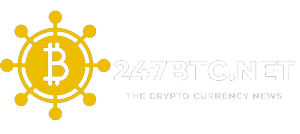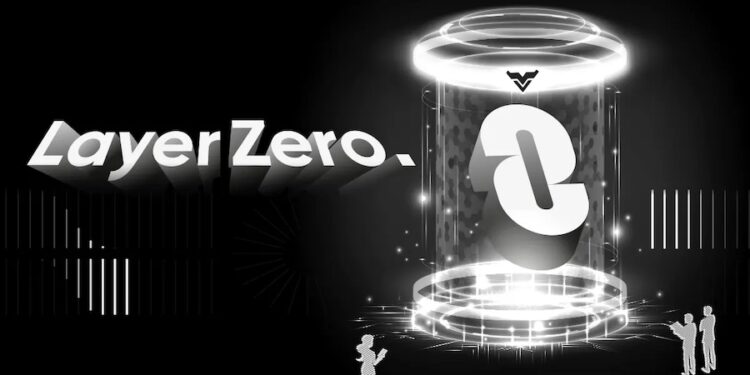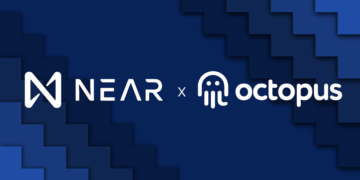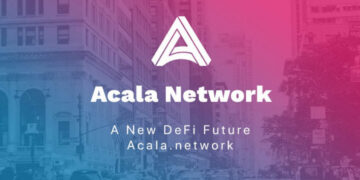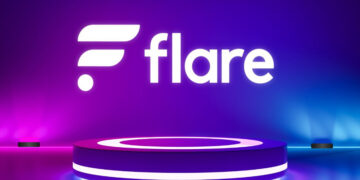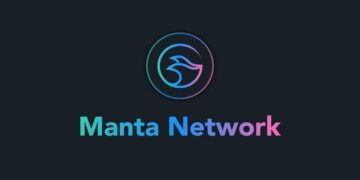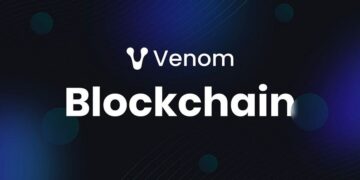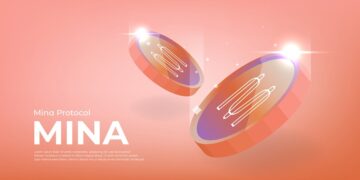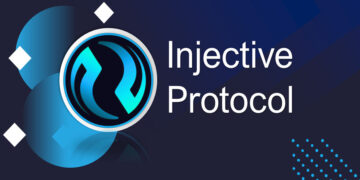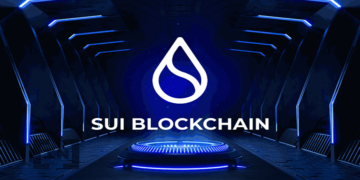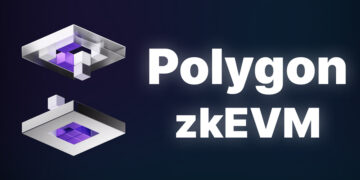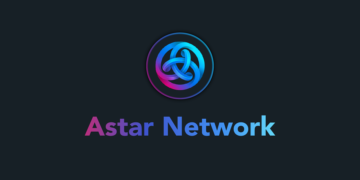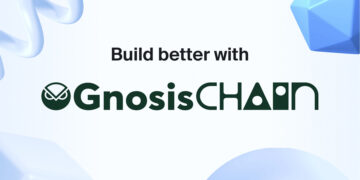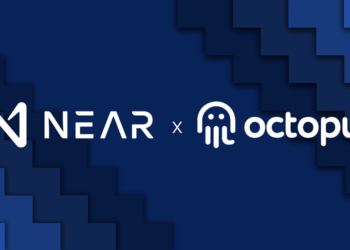This article delves into the concept of LayerZero – a protocol designed for building efficient dApps across multiple blockchain networks without the need for trust. The protocol employs a multi-chain interaction approach that allows developers to seamlessly construct decentralized applications across various blockchain systems. Stay tuned to find out more about LayerZero and its unique features.
Table of Contents
ToggleWhat is LayerZero Network Crypto?
The LayerZero protocol is a multi-chain interactive solution that efficiently enables the creation of dApps across multiple blockchains. It achieves this by connecting dApps on chains through the utilization of Ultra Light Nodes, which strike a balance between the security of a Light Node and the cost-effectiveness of a middleware chain.
By utilizing this protocol, developers are capable of converting their dApps into multi-chain applications through an uncomplicated interface.
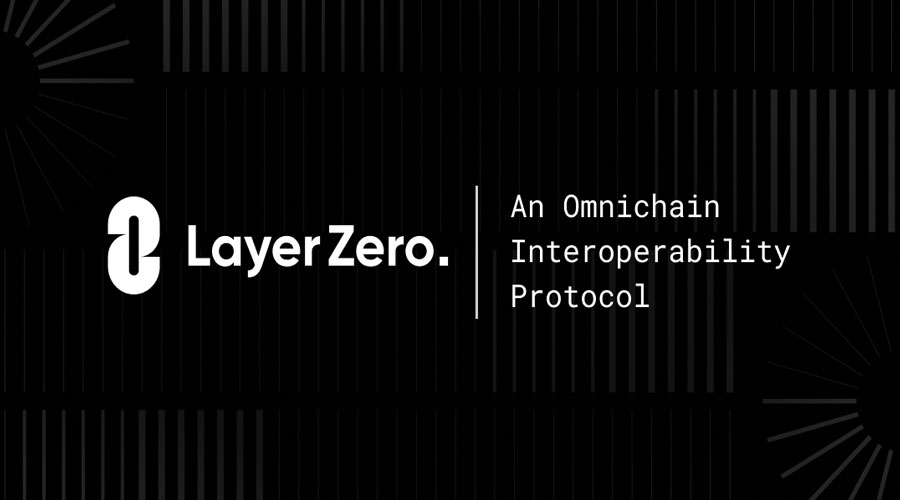
How does LayerZero protocol work?
LayerZero is essentially a layer that connects separate chains within a blockchain network by integrating endpoints into the communication networks between these chains. However, these endpoints do not store any data, as data is transferred to Relayer for off-chain verification. Endpoints serve solely as a lightweight client application that interfaces with network infrastructure.
LayerZero’s method of interacting with multiple chains involves sending messages through the chains by utilizing linked Endpoints, as opposed to other bridges that use the Mint and Burn mechanism. This mitigates the high risk of locking assets on Smart Contracts. Additionally, with LayerZero, all tokens that reach users are Native Tokens, providing optimized technology for bridges.

LayerZero is not only a protocol, but also a platform for developing dApps with the standout feature of seamlessly interacting with all other chains. Thus, any dApp built on LayerZero is inherently Multichain and Crosschain capable. Additionally, LayerZero supports other projects in integrating Multichain and managing Crosschain. Moreover, it supports the issuance of Tokens and NFTs on multiple chains.
LayerZero can be likened to a modular blockchain system which is divided into specialized components. The Relayer component is responsible for verifying and monitoring messages sent between blockchains. The Endpoint serves as the transfer point for messages transmitted between the components. Additionally, dApps constructed on LayerZero are accountable for liquidity and assets management. The aforementioned components function harmoniously to provide a reliable and seamless blockchain experience.
The security concern of LayerZero and other Bridges is a critical issue that demands attention. Even though the design improves security, there is still the potential for risks to occur. Due to this, LayerZero has invested an extensive amount of money into programs that detect and fix faults, amounting to millions of dollars.
By integrating LayerZero’s multi-chain communication protocol with Chainlink’s Oracle network, multi-chain dApps can offer a range of new functionalities for their users. Although not exhaustive, some examples of these functions include:
- Dex Crosschain: Assist in exchanging assets across different chains and multiple protocols, thereby facilitating the seamless flow of assets.
- Unlock Liquidity: Employing your isolated assets to generate profits for any group on any blockchain ecosystem can be a prudent business strategy.
- Multichain Lending And Borrowing: Lending and borrowing assets across chains.
- Derivatives For Every Asset: Create derivative contracts for any token or currency.
- Transaction Optimization: High-throughput and computationally intensive dApps can alleviate the cost burden of expensive transactions by transferring them to a more cost-effective blockchain environment.
- Determine State: It is easily verifiable to determine the status of any blockchain system or Layer2 from another blockchain.
The Difference of LayerZero
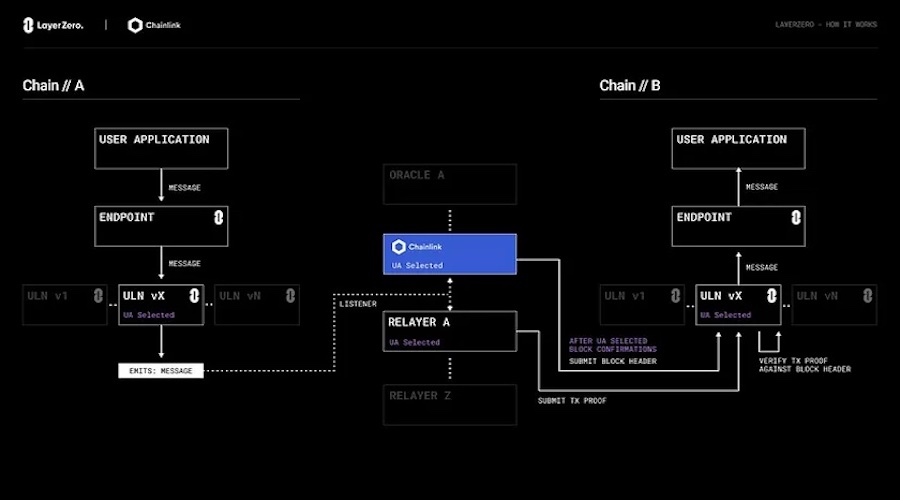
Although there is a possibility of a security breach if both Relayer and Chainlink collaborate with each other, it seems highly unlikely as both are independent and operate autonomously. In typical scenarios, a hacker sends a fake message to the Relayer, which is then redirected to an unknown destination. The Relayer only accepts the message when accompanied by the correct sent asset. If there is any room for error, Chainlink updates the On-chain data to prevent any potential security threats.

In contrast to Cex exchanges that require users to place their trust in them and allow no visibility into their assets, Dex Crosschain exchanges necessitate a swap of assets through an intermediary asset. This process incurs substantial fees and poses risks associated with the conversion of assets.
Furthermore, LayerZero offers tools and technology to developers to create new solutions on DeFi, such as a cross-chain DEX developed by Stargate. Additionally, LayerZero can act as a bridge for any chain, like the way Aptos has integrated. Moreover, cross-chain communication is a remarkable advancement for the world of Blockchain and DeFi. Utilizing this, we can build wallets that interact across chains, develop lending applications where users can borrow SOL on Solana when locking ETH on the Ethereum network, and create dApps on LayerZero without being limited to a fragmented liquidity network.
Applications of LayerZero
Bridge
The first notable application of LayerZero undoubtedly lies in its bridge, which serves as a necessary conduit for the seamless transfer of assets between various blockchains.
The first cross-chain bridge to incorporate the Omnichain infrastructure of LayerZero is Stargate Finance. This project facilitates the transfer of assets between multiple chains of Layer 1 and Layer 2, such as Ethereum, BNB Chain, Avalanche, Polygon, Fantom, Arbitrum, Optimism, and Metis.
Cross-chain Swap
The infrastructure of LayerZero enables users to perform direct token swaps between different chains. In the past, exchanging tokens between ecosystems required users to undertake multiple steps.
Example: You have USDT on BEP-20 network but want to have OP token on ERC-20 network, now you will have to go through 2 steps:
- Step 1: Bridge USDT (BEP-20) to USDT (ERC-20).
- Step 2: Swap USDT (ERC-20) to OP (ERC-20).
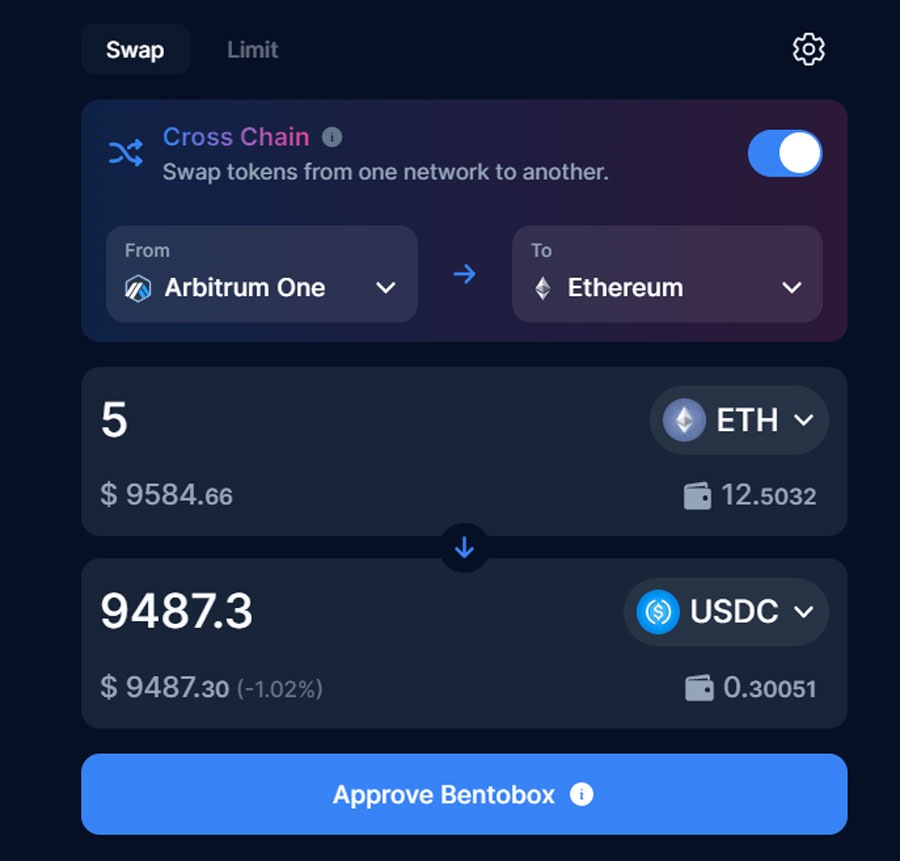
Now, with support from LayerZero, dapps can allow users to simultaneously bridge and swap directly from USDT (BEP-20) to OP (ERC-20) in a single transaction.
Decentralized exchanges (DEX) such as Sushi, Hashflow, and WOO Network have integrated solutions from LayerZero.
Omnichain Fungible Token
The Omnichain Fungible Token (OFT) is a collective term used for tokens that are part of projects that utilize the LayerZero omnichain infrastructure. These tokens can be transferred between different chains while still retaining their original name (without the need to convert into wrapped form).
Several notable projects that have integrated OFT include Frax Finance, Liquity, Qi DAO, and TraderJoe.
Cross-chain Lending & Borrowing
The technology developed by LayerZero has also been implemented in Money Market protocols to drive multi-chain lending and borrowing activities.
Radiant Capital is the first lending protocol to utilize LayerZero’s omnichain model, enabling users to borrow and lend assets across any chain. Additionally, lenders are able to withdraw their assets from any chain they prefer. This feature enhances the flexibility and convenience of the platform, making it a reliable and efficient solution for users in the cryptocurrency space.
Multi-chain Yield Aggregator
The advent of LayerZero has presented fresh opportunities for yield aggregator projects to expand their multi-chain implementation, in contrast to the conventional single-chain model utilized in the past.
This application provides assistance to users in identifying the most effective methods for maximizing profit from all ecosystems. In doing so, it increases their ability to access high-profit opportunities. The language used is formal and informative.
LayerZero token overview and tokenomic
At present, the project has not yet released its project token. 247Btc will provide updates to interested parties as soon as information becomes available.
Token data
- Token Name: LayerZero Token.
- Ticker: Updating…
- Blockchain: Ethereum.
- Token Standard: ERC-20.
- Contract: Updating…
- Token Type: Utility and Governance.
- Total Supply: Updating….
- Circulating Supply: Updating…
Project team, investors & partners
Project team
Caleb Banister: Co-Founder
- In 2010, he obtained a degree in Computer Science from the University of New Hampshire. During his time at the university, he worked as a Software Developer for UNH InterOperability Lab, where he developed automated testing software for high-bandwidth devices, including DSL equipment.
- Upon graduating, he embarked on an entrepreneurial journey with Coder Den, a company specializing in designing and implementing comprehensive mobile applications primarily for Android and iOS platforms. This includes the creation and development of supportive web pages, server design, and server database interaction. He has remained devoted to this venture for over a decade.
- In March 2018, he co-founded Startup 80Trill, a cryptocurrency company specializing in writing and auditing smart contracts for blockchain-related projects. In June 2019, he co-founded Minimal AI. Until February 2021, he ceased all work there to focus on building LayerZero Labs up to the present time.
Bryan Pellegrino: Co-Founder & CEO
- He had previously obtained a degree in Computer Science from the University of New Hampshire. Upon graduation, he joined Coder Den as the COO and Founder, albeit for a period of approximately two years.
- In 2017, OpenToken was founded by the individual along with their colleagues. The company provided support for next-generation projects that aimed to alter our perception of decentralized ecosystems. However, it is worth noting that after nearly two years, the individual in question subsequently departed.
- Subsequently, he worked for Rho AI for a duration of 8 years, during which he held various positions such as Entrepreneur In Residence, Lead Engineer, and Machine Learning Architecture. Throughout his tenure, he contributed significantly to building the core dataset and implementing unique learning strategies to extract detailed information and facilitate advanced analytics.
- In February 2021, the individual in question participated in the establishment of LayerZero Labs and currently serves as its CEO.
Ryan Zarick: Co-founder & CTO
- Initially, the individual achieved success by obtaining a Bachelor’s degree in Computer Science. Subsequently, they furthered their education and attained success by earning a Master’s degree in the same field from the University of New Hampshire.
- Upon graduation, he commenced his tenure as the Chief Technology Officer at Buzzdraft. Buzzdraft is an online imaginary sports website which was acquired in March 2013. He dedicated himself to this position for approximately one and a half years.
- Subsequently, he became the founder of companies such as 80Trill, Coder Den, and Minimal AI, dedicating more than 14 years to their development. Specifically, he was devoted to Coder Den for over a decade. Having abandoned all previous engagements, he collaborated with his colleagues, Bryan Pellegrino and Caleb Banister, to establish and further LayerZero Labs from February 2021 until present day.
Investors
- April 1, 2021: Seed round successfully raised $2M from investment funds but did not disclose the names that directly invested.
- September 16, 2021: Series A successfully raised $6.3M led by Multicoin and Binance Labs. There is also participation from funds such as Sino Global Capital, Defiance, Delphi Digital, Robot Ventures, Spartan, Hypersphere Ventures, Protocol Ventures and Gen Block Capital.
- Mar 30, 2022: Extended Series A successfully raised $135M led by Sequoia Capital, A16z with the participation of some other funds such as Animoca Ventures, Coinbase Ventures, Multicoin Capital, Tiger Global Management, CoinFund, Dapper Labs , Hypersphere Ventures, Echelon Capital, Gemini, GHAF Capital Partners, imToken Ventures, Matrixport,…
- July 18, 2022: Funding round led by Christie’s with undisclosed amount raised.
- 04/04/2023: Series B successfully raised $120M from investment funds such as Circle, Sequoia Capital, Andreessen Horowitz (a16z), SamsungNext, NGC Ventures, Bond Capital, Lightspeed Venture Partners, OpenSea Ventures, Bixin Ventures, BPEA EQT, Com2uS, Global Coin Research, Chapter One, Franklin Templeton Investments, OKX Blockdream Ventures, ATRUM, K5 Ventures, King River Capital, Maple VC, Protofund, GS Futures, IOBC Capital, MVP Ventures, Red Beard Ventures, Christie’s.
What is Octopus Network (OCT) ? A comprehensive overview of the OCT cryptocurrency
The NEAR Protocol currently hosts an immensely significant project for its ecosystem, which regrettably has yet to garner the attention...
Read moreWhat is Acala Network (ACA)? Overview of the cryptocurrency ACA coin
Acala Network has recently gained significant attention from the community. The project's success in winning the first Parachain on Polkadot...
Read moreWhat is Ripple ( XRP coin )? An general introduction to the Ripple coin
Bitcoin is the largest digital currency in the world, with a limit of 21 million units, and it is well-known...
Read moreWhat is Flare Network (FLR)? Overview of the FLR Token project
Flare (FLR) has been developed on the Flare Network, an ecosystem that provides Smart Contract capabilities to popular Blockchains such...
Read moreWhat is Manta Network and what notable features does the ZK Layer 1 project, which has been invested by Binance Labs, possess?
The increasing need for user data security in digital transactions has been driven by the development of blockchain technology and...
Read moreWhat is Venom Network? It is the first blockchain to be monitored by the UAE regulatory authorities
What is Venom? Venom Network is the UAE's (United Arab Emirates) first Blockchain project initiated by the International Financial Center....
Read moreWhat is Mina Protocol (MINA)? Complete set of cryptocurrency MINA Token
The blockchain platform, Mina, has garnered significant attention from users for a considerable period, having been sold on Coinlist. Furthermore,...
Read moreWhat is Injective Protocol (INJ)? All you need to know about INJ coin
Injective was initially introduced in October 2020 as a cross-chain protocol. Since June 2021, the project has evolved into a...
Read moreWhat is Sui Crypto? Details About SUI Token
The emergence of Sui blockchain has brought forth a new generation of blockchain technology. Its groundbreaking features and notable advantages...
Read moreWhat is Polygon zkEVM? Layer 2 zkEVM is a class rival of zkSync
On March 27, 2023, Polygon zkEVM was officially launched on Mainnet Beta, joining the ranks of other prominent Layer zkEVM...
Read moreWhat is StarkNet Crypto? StarkNet Ecosystem Overview
Inquiring about the ecosystem of StarkNet crypto, we seek information on its various components and current development phase. Furthermore, we...
Read moreWhat is Astar Network & Shiden Network? Complete set of ASTR, SDN Token
This article will provide comprehensive information on Astar Network and Shiden Network, including their prominent features and tokenomics details of...
Read moreWhat is Gnosis Crypto (GNO)? Complete set of GNO Cryptocurrency
What is Gnosis Crypto (GNO)? This article provides comprehensive and valuable information regarding the digital currency Gnosis (GNO) for individuals...
Read moreWhat is Moonbeam Crypto? Complete set of GLMR & RIVER Cryptocurrencies
Moonbeam is a smart contract platform that has been built and developed to work compatibly with EVM on Polkadot. It...
Read moreWhat is Flow Crypto? Detailed information about FLOW token
In 2017, CryptoKitties, an NFT game on the Ethereum platform, experienced explosive growth that resulted in a sharp increase in...
Read more